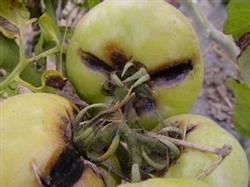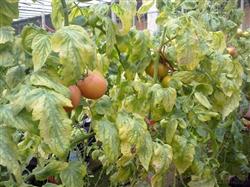Chemical Control of Tomato Root-knot nematode

In recent years, the incidence of tomato root-knot nematode is on the rise, especially in dry sandy soil, which has caused great losses. Root-knot nematodes have a wide range of hosts, which not only damage tomato, but also seriously damage cucumbers and sweet peppers. Root-knot nematode usually overwinters with eggs or 2nd instar larvae in the soil with tumors, root knot and diseased remains, and can generally survive in soil for 2-3 years. Overwintering eggs or 2nd instar larvae invade the roots of plants and stimulate root cell proliferation when the soil temperature is suitable. Root knot or nodule formation. The main sources of primary infection are diseased soil, diseased seedlings and irrigation water. When the soil temperature is 25 ℃-30 ℃ and the soil water content is about 40%, the development of pathogenic nematode is the fastest, and it can be killed in 10 minutes when the temperature is below 10 ℃ and 55 ℃. The conditions of high topography, dry soil, loose soil and low salinity are beneficial to the activity of root-knot nematode and the disease of continuous cropping. The prevention and control methods are as follows. 1. Rotation: tomatoes, cucumbers and sweet peppers are important hosts of root-knot nematodes. Diseased fields should not be planted continuously, but should be planted with leeks, garlic and onions at intervals of 2 years. two。 Select disease-free soil to raise seedlings: select new soil or disease-free soil to prevent the transmission of nematodes in diseased soil during transplanting, apply mature stable fertilizer as fertilizer, promote the reproduction of nematode parasitic bacteria and reduce adult harm. Root-knot nematodes are mostly distributed in 3-9 cm soil layer. Deep ploughing can reduce the harm. 3. High temperature greenhouse: when pulling tomato seedlings in spring, the temperature is higher, combined with deep turning, it can kill nematodes or reduce the population density. The specific measures are: first remove the root of the disease, and then turn the soil deeply, pour water to cover the plastic film, and sulk the shed at high temperature, so that the soil temperature rises to about 60 ℃. four. Chemical control: apply 10 armour in 667 square meters hole when sowing or planting. The management of nematodes occurring in the growing period of B tomato should be strengthened, complete removal of disease and residue, centralized burning or deep burial, and root irrigation with 1500 times of 50% phoxim, 90% trichlorfon and 80% dichlorvos EC, once every 7-8 days and 2-3 times continuously.
- Prev

The reason why tomatoes can't sit still in the later stage
Tomato navel rot should be controlled by comprehensive measures based on cultivation measures. Including: (1) selection of disease-resistant varieties, such as Qiguo, Changchun 1, Lmur402 and so on. (2) timely watering: a balanced supply of water must be ensured. Especially in the fruit period, we should pay more attention to the balanced supply of water, drought.
- Next

How is the yellow leaf of tomato and roll leaf disease to return a responsibility? How to prevent and cure?
Consultation content: how is the yellow leaf of tomato and leaf roll disease to return a responsibility? How to prevent and cure? Answer content: Hello! Tomato yellow leaf and leaf roll disease: if the disease is accompanied by Bemisia Tabaci (small white moth), it is likely to be tomato yellow mosaic leaf curl virus disease (commonly known as TY virus disease). TY virus.
Related
- Where is it suitable to grow horseradish in China? it is expected to see the middle altitude horseradish in Alishan.
- How to prevent tomato virus disease reasonably? (Control methods included)
- Many people like to plant towel gourd on the balcony. What are the main points of this method and management?
- What crops can chili peppers be mixed with?
- Fertilization techniques and matters needing attention in Tomato
- What are the grafting techniques for peach seedlings in spring?
- Harm and control methods of root swelling disease of Chinese cabbage
- What are the pests of sweet potatoes? How to prevent and cure it?
- Symptoms, causes and Control methods of navel Rot in Tomato
- The cause of "Cucumber rotten bibcock" in Farmers' planting Cucumber and its Control Plan

